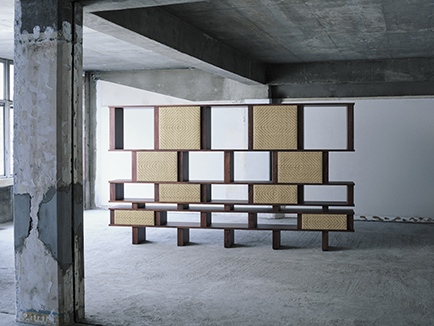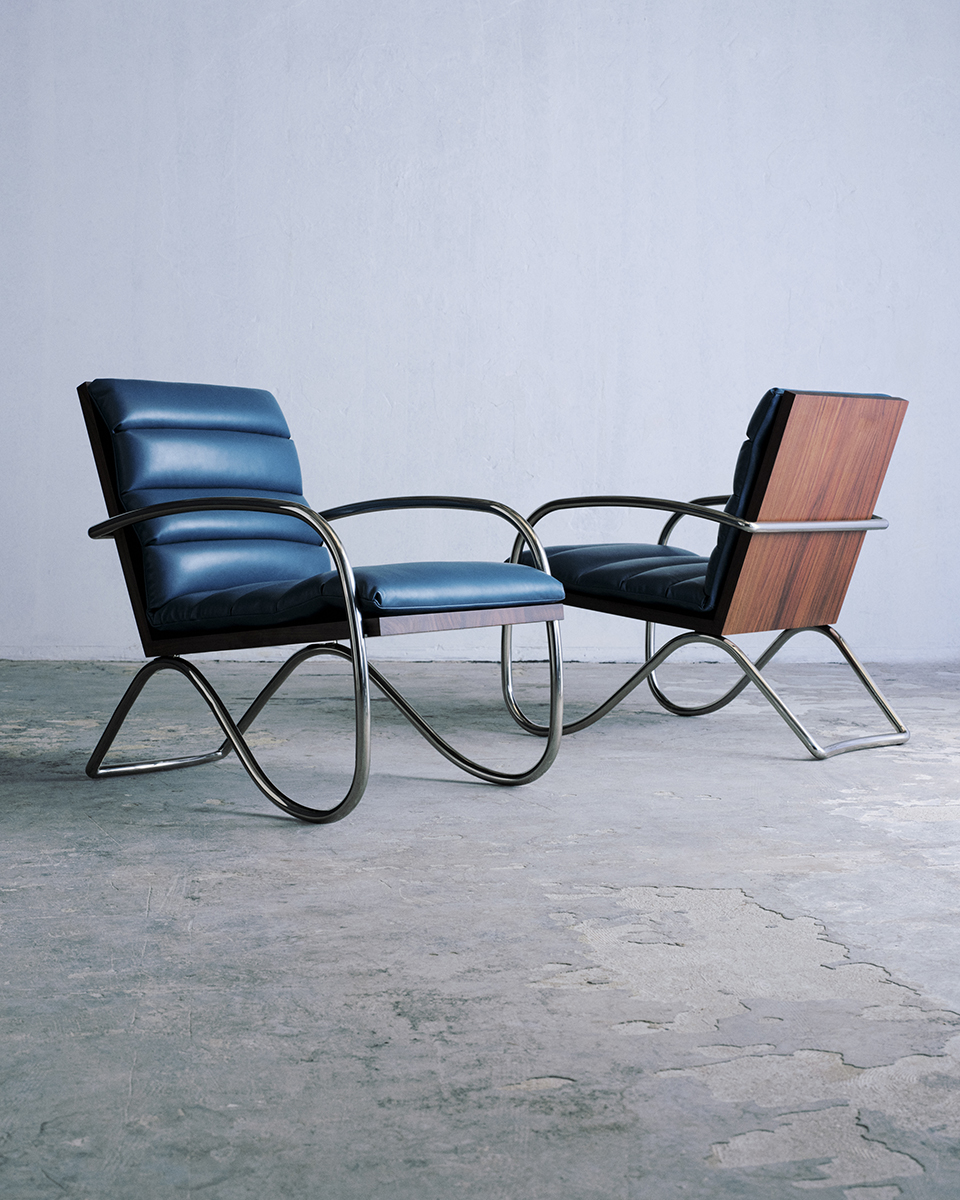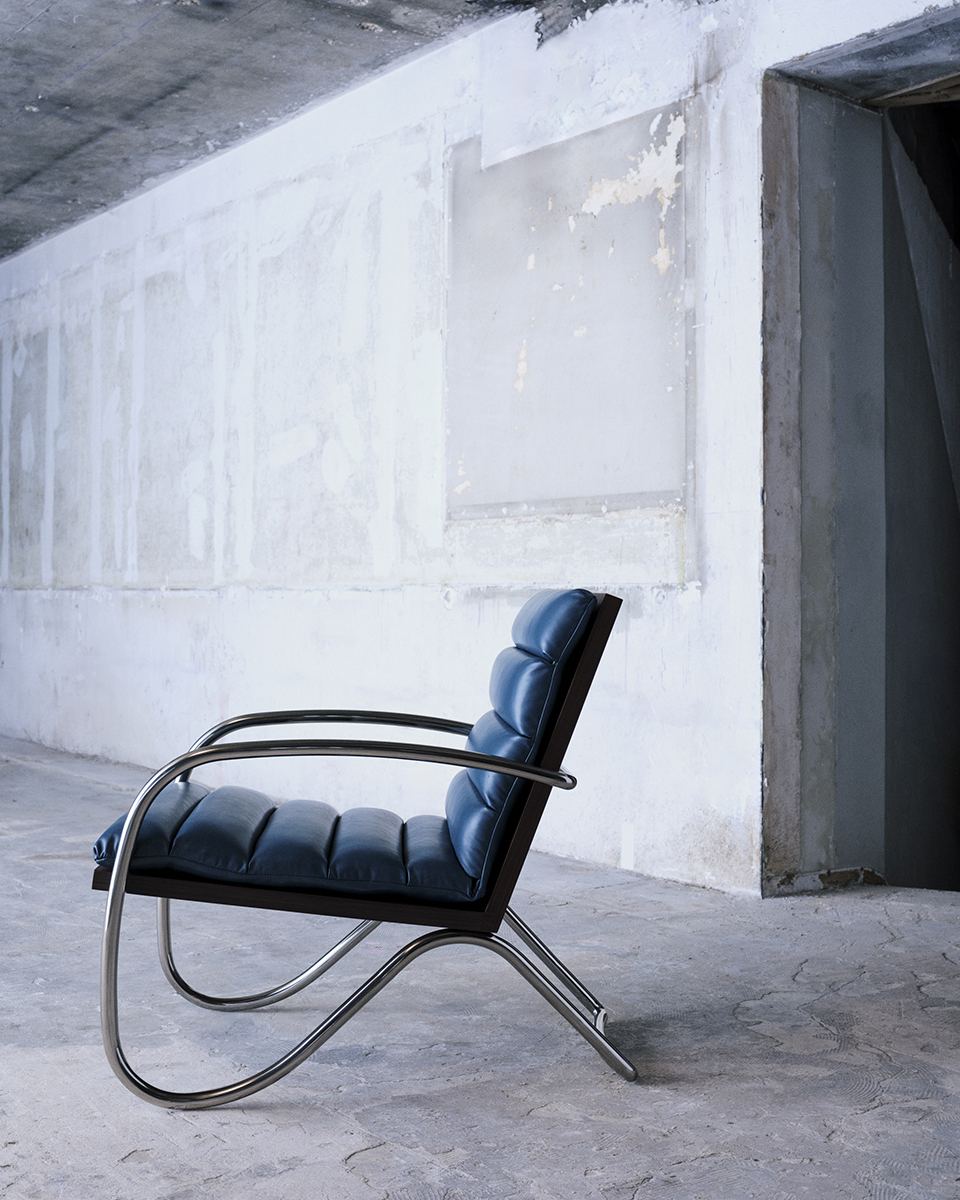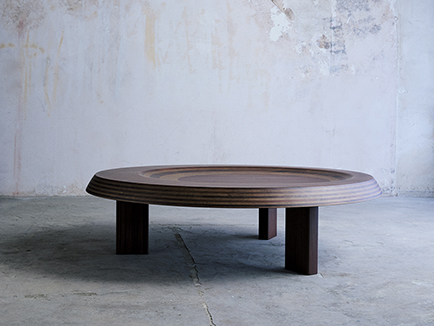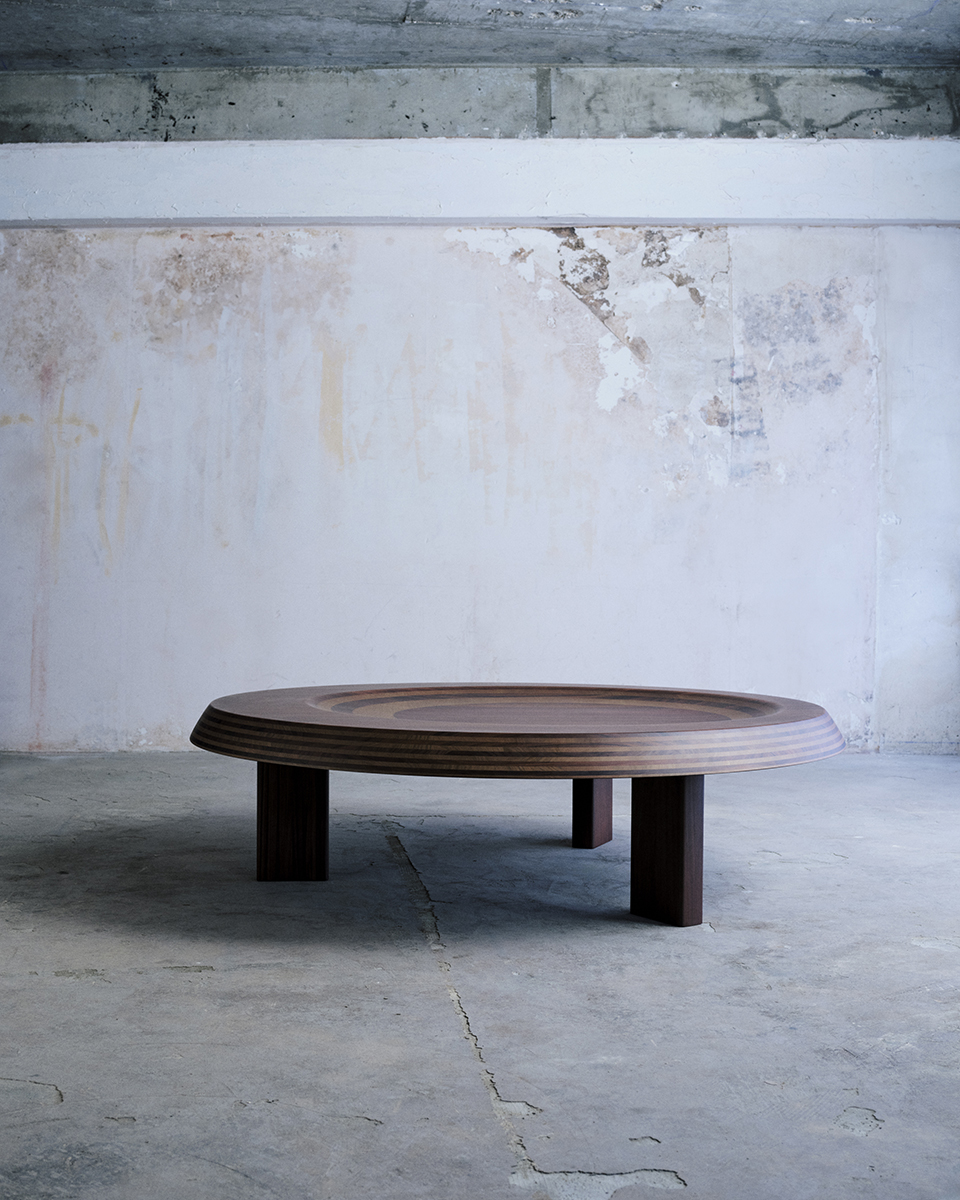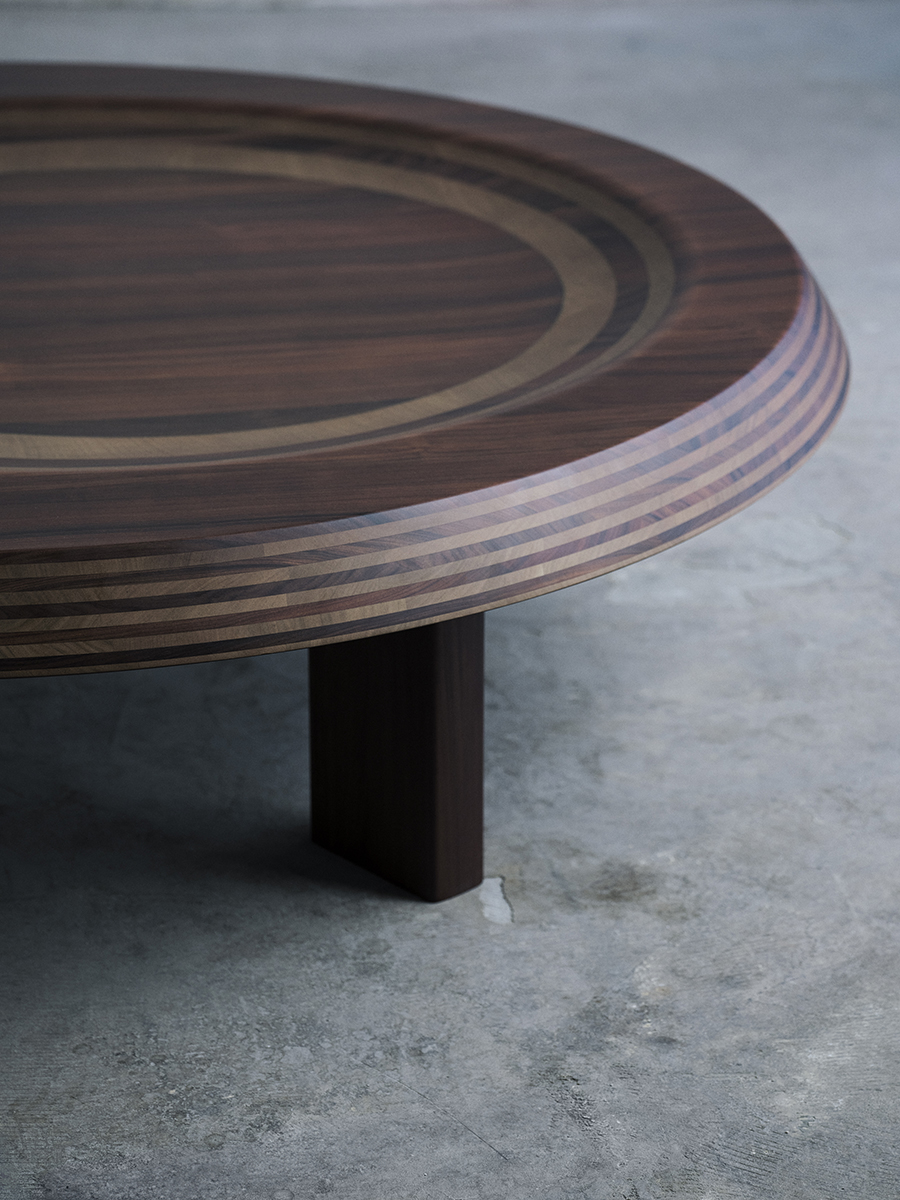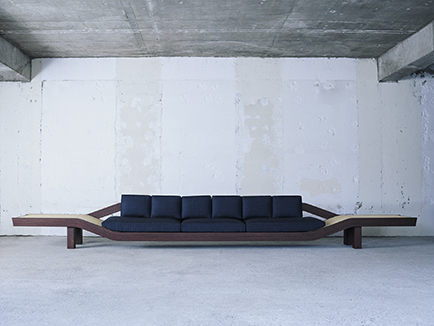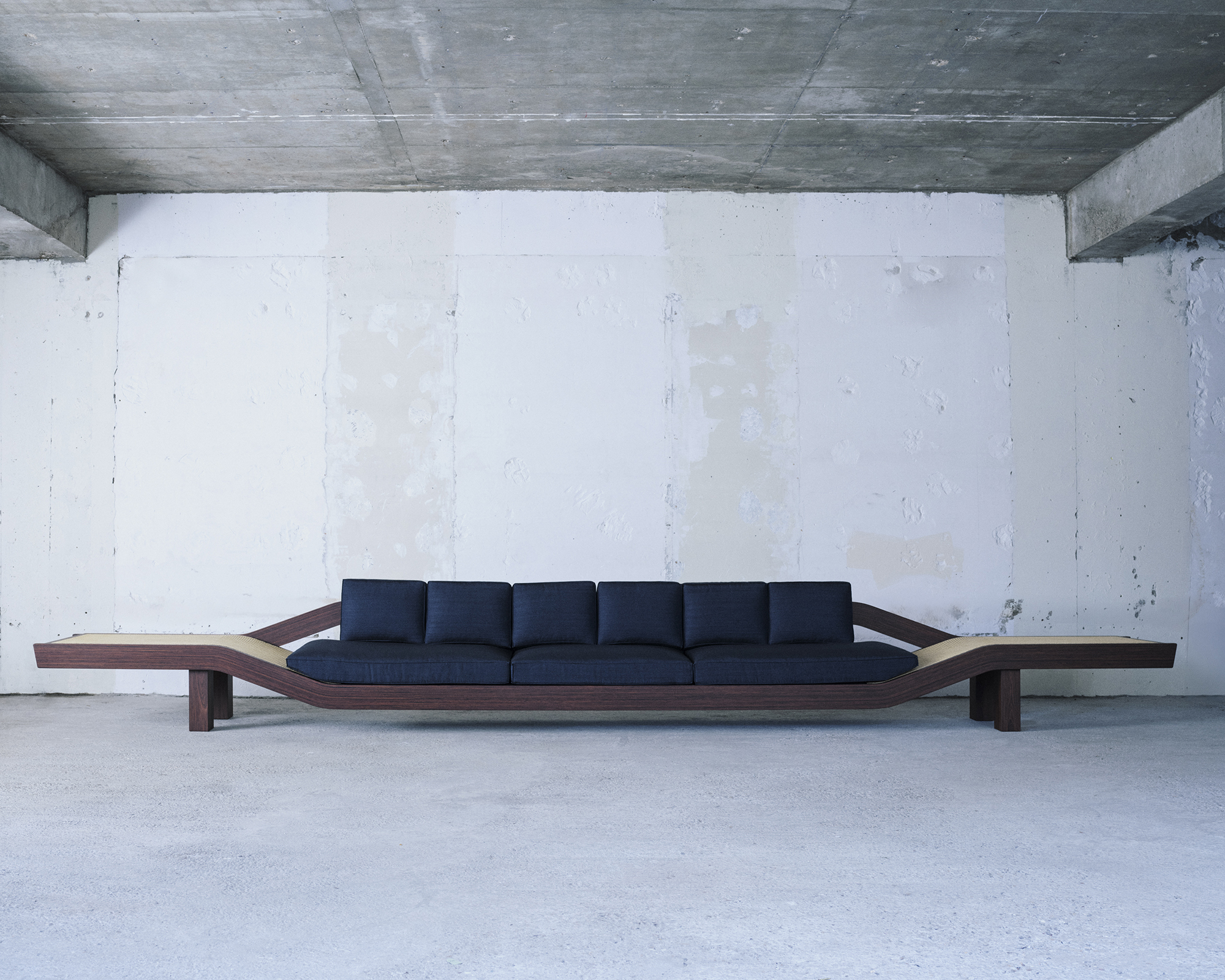Charlotte Perriand (1903-1999) est considérée comme l’une des femmes designers les plus importantes des années 50.
Ayant longtemps collaboré avec Le Corbusier et Pierre Jeanneret, elle réalise dès 1927 plusieurs meubles en métal – dont la célèbre chaise longue à position variable que Thonet éditera deux ans plus tard.
Libérée d’une esthétique conventionnelle, Charlotte Perriand oriente son esprit vers le travail du bois où elle trouve son épanouissement à la suite d’un séjour de quatre ans au Japon – la paille, le bambou, les branches d’arbre deviennent ses matériaux de prédilection : par les diverses combinaisons qui en émanent, elle ne conserve que les volumes essentiels et s’éloigne ainsi d’un logique formalisme.
C’est surtout après la seconde guerre mondiale que Charlotte Perriand élabore une conception nouvelle de l’habitat en conférant à ses réalisations une dimension humaine : par l’emploi souple des matériaux, et par son rapport privilégié avec la nature, elle impose un style pur et puissant par un certain art de vivre (voir ses modèles de table en bois massif et de forme libre).
Consciente cependant des réalités économiques et sociales, elle opte pour la production en série, élaborant une synthèse entre la tradition et l’industrie. « Soucieuse d’innover et non d’affirmer une formule de rénovation », elle réalisera de nombreux aménagements tels que les logements de l’Unité d’Habitation de Marseille, avec Le Corbusier, en 1949, et les chambres d’étudiant de la Cité Universitaire de Paris en 1953, dont un élément principal est une bibliothèque fabriquée en collaboration avec Jean Prouvé (commandée par André Bloc, créateur du « Groupe Espace »), à 70 et 40 exemplaires.
Tout au long de sa carrière, Charlotte Perriand s’est profondément attachée à maintenir une qualité de vie : des maisons ouvrières, citadines ou champêtres, aux refuges et hôtels de montagne, elle a sauvegardé l’homme et son environnement en créant un mobilier à la fois confortable et fonctionnel.
Jean Prouvé disait d’elle qu’elle était un des rares créateurs chez qui l’harmonie de pensée contemporaine était spontanée.

